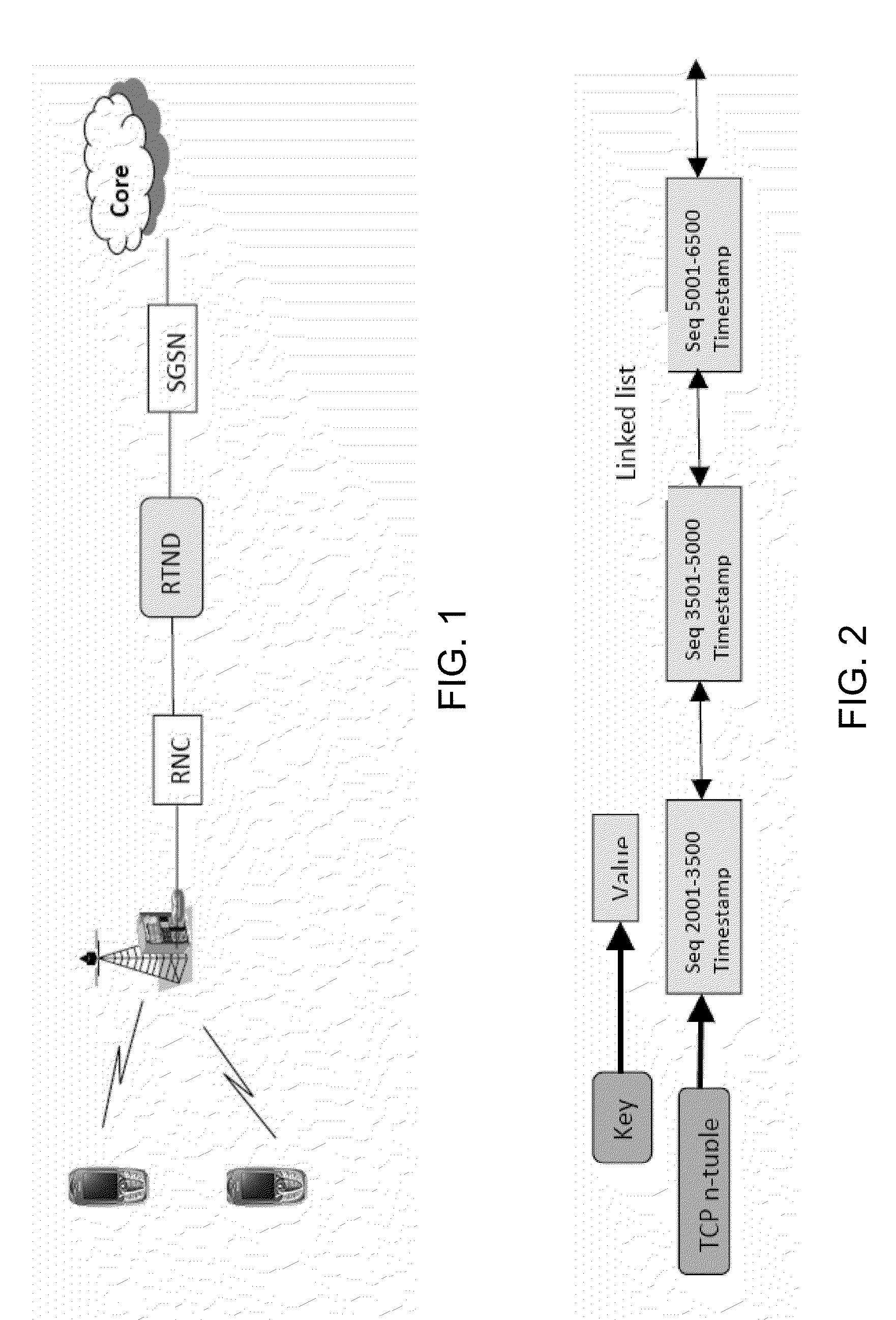RAN analytics, control and tuning via multi-protocol, multi-domain, and multi-RAT analysis
a multi-domain, multi-rat technology, applied in data switching networks, instruments, frequency-division multiplexes, etc., can solve the problems of corresponding network bandwidth/delay/jitter requirements, reducing the available capacity in certain locations, and tcp session attempts to maximize network usage may not be suitable for certain applications and other tcp connections
- Summary
- Abstract
- Description
- Claims
- Application Information
AI Technical Summary
Benefits of technology
Problems solved by technology
Method used
Image
Examples
Embodiment Construction
[0016]As described above, the RTND of the present invention is able to monitor control plane and user plane traffic, and generate performance and other metrics based on that monitored information. These metrics can be used to implement policy control and enforcements for action when deployed as an inline proxy device or can be exported to external devices when deployed in monitoring mode. Some of the metrics that can be monitored and determined by the RTND include:
[0017]Sector Utilization level (SUL),
[0018]Sector Signaling Utilization Level (SSUL),
[0019]Subscriber Quality Index (SQI),
[0020]Subscriber Mobility Index (SMI),
[0021]and others.
[0022]For example, the SUL for a given radio sector is estimated by looking at the dataflow through the RAN interfaces, mapping application flows to subscribers, and by mapping subscribers to specific segments, such as sectors within the RAN. A sector is defined as a geographic area served by the base station and identified by the service area or se...
PUM
 Login to View More
Login to View More Abstract
Description
Claims
Application Information
 Login to View More
Login to View More - R&D
- Intellectual Property
- Life Sciences
- Materials
- Tech Scout
- Unparalleled Data Quality
- Higher Quality Content
- 60% Fewer Hallucinations
Browse by: Latest US Patents, China's latest patents, Technical Efficacy Thesaurus, Application Domain, Technology Topic, Popular Technical Reports.
© 2025 PatSnap. All rights reserved.Legal|Privacy policy|Modern Slavery Act Transparency Statement|Sitemap|About US| Contact US: help@patsnap.com



